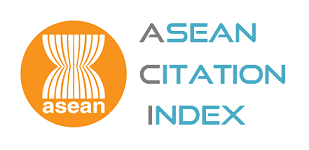A NEEDS ASSESSMENT FOR PROMOTING ANALYTICAL THINKING SKILLS OF EARLY CHILDHOOD CHILDREN IN SCHOOLS UNDER PRIMARY EDUCATIONAL SERVICE AREA OFFICE 1 SAKON NAKHON
Keywords:
Analytical Thinking Skill, Early Childhood Children, Needs Assessment, Development GuidelinesAbstract
The objectives of this research were to 1) examine the components of analytical thinking skills of early childhood children in schools under Primary Educational Service Area Office 1 Sakon Nakhon, 2) explore current and expected conditions of analytical thinking skills of early childhood children, 3) assess the need for promoting analytical thinking skills of early childhood children, and 4) establish guidelines for promoting analytical thinking skills of early childhood children in schools Primary Educational Service Area Office 1 Sakon Nakhon. The sample, obtained through multi–stage random sampling, included 191 early childhood teachers in schools under Primary Educational Service Area Office 1 Sakon Nakhon, during the 2022 academic year. The research instrument was a set of 5–level rating scale questionnaires, which demonstrated an Index of item objective congruence (IOC) in terms of current situations ranging from 0.60 to 1.00, discriminative power from 0.54 to 0.86, with a reliability of 0.97. The expected conditions also had an IOC ranging from 0.60 to 1.00, discriminative power values ranging from 0.55 to 0.82, with a reliability of 0.97, and a set of questionnaires assessing the development guidelines. Statistics for data analysis included frequency, percentage, mean, standard deviation, Priority Needs Index (PNImodified), and confirmatory factor analysis.
The research results indicated that 1) the analytical thinking skills of early childhood children consisted of three components: categorization, classification, and comparison, each of which was appropriate at the highest level. The model for measuring the analytical thinking skills of early childhood children was consistent with the empirical data (𝑥2 = 0.00, df = 0, p–value = 1.00, GFI = 1.00, AGFI = 1.00, RMR = 0.00, RMSEA = 0.00). Component weights ranging from 0.89 to 0.94 showed differences at the .01 level of significance, with comparison being the most weighted component, followed by classification and categorization, respectively; 2) The current conditions of analytical thinking skills of early childhood children were overall at a high level, while the expected conditions were overall at the highest level; 3) The need assessment on promoting analytical thinking skills in early childhood revealed an overall PNImodified value of 0.118. When ranking each aspect from highest to lowest needs index values, comparison ranked first (PNImodified = 0.138), followed by categorization (PNImodified = 0.117), and classification (PNImodified = 0.099, and 4) The guidelines for promoting analytical thinking skills in early childhood children focused on the comparison aspect, which had the three highest importance index values: identify differences in smells, comparing items with similar sounds, and distinguishing between sounds of different objects.
References
กระทรวงศึกษาธิการ. (2560). หลักสูตรการศึกษาปฐมวัย พุทธศักราช 2560. กรุงเทพฯ: สำนักวิชาการและมาตรฐานการศึกษา สำนักงานคณะกรรมการการศึกษาขั้นพื้นฐาน กระทรวงศึกษาธิการ.
ปัณณ์ธิชา ถนนนอก. (2560). การจัดกระบวนการเรียนรู้วิทยาศาสตร์ เทคโนโลยีและสังคม เพื่อพัฒนาการคิดวิเคราะห์ของเด็กปฐมวัย. วิทยานิพนธ์ ค.ม. เชียงใหม่: มหาวิทยาลัยเชียงใหม่.
แววมยุรี ประสานเนตร. (2560). การขาดทักษะการคิดวิเคราะห์ (Lack of Critical Thinking). เข้าถึงได้จาก https://mcpswis.mcp.ac.th/html_edu/cgi–bin/main_php/print_informed.php?id_count_inform=19320. 15 กรกฎาคม 2566.
วาโร เพ็งสวัสดิ์. (2551). วิธีวิทยาการวิจัย. กรุงเทพฯ: สุวีริยาสาส์น.
วลัยกรณ์ สังกะสูต. (2563). ผลการจัดกิจกรรมการเรียนรู้ตามแนวคิดของรูปแบบแมธทรีซี (MATH–3C) เรื่อง ของดีเมืองโคราชที่มีต่อความสามารถทางด้านการคิดวิเคราะห์ของเด็กปฐมวัยโรงเรียนมารีย์วิทยา จังหวัดนครราชสีมา. วิทยานิพนธ์ ค.ม. กรุงเทพฯ: มหาวิทยาลัยราชภัฎพระนคร.
ศศิพันธ์ เปี๊ยนเปี่ยมสิน และคณะ. (2561). เอกสารประกอบการศึกษาปฐมวัย (Early Childhood Education). กรุงเทพฯ: ศูนย์บริการสื่อและสิ่งพิมพ์กราฟฟิคไซท์.
สถาบันราชานุกูล. (2557). การเตรียมความพร้อมทักษะพื้นฐานด้านคณิตศาสตร์ในเด็กปฐมวัย. กรุงเทพฯ: ชุมนุมสหกรณ์การเกษตรแห่งประเทศไทย จำกัด.
สุนันทา นิ่มทอง. (2563). การจัดกิจกรรมเสริมประสบการณ์โดยใช้ผังกราฟิกเพื่อพัฒนาความสามารถในการคิดวิเคราะห์ของเด็กปฐมวัย. วิทยานิพนธ์ ค.ม. พิษณุโลก: มหาวิทยาลัยราชภัฎพิบูลสงคราม.
สำนักงานคณะกรรมการการศึกษาขั้นพื้นฐาน. (2561). คู่มือหลักสูตรการศึกษาปฐมวัย พุทธศักราช 2560 สำหรับเด็กอายุ 3–6 ปี. กรุงเทพฯ: โรงพิมพ์ชุมนุมสหกรณ์การเกษตรแห่งประเทศไทย จำกัด.
สำนักงานคณะกรรมการการศึกษาแห่งชาติ. (2562). พัฒนาสมองกับการเรียนรู้. กรุงเทพฯ: สถาบันวิจัยเรื่องการพัฒนาสมองกับการเรียนรู้สำนักนายกรัฐมนตรี.
อรุณี หรดาล และชนิพรรณ จาติเสถียร. (2564). การพัฒนาความรู้ความสามารถในการจัดกิจกรรมเพื่อพัฒนาการคิดวิเคราะห์ของเด็กปฐมวัยด้วยผังกราฟิกสำหรับครูปฐมวัยในกรุงเทพมหานครและปริมณฑล. วารสารศึกษาศาสตร์ มหาวิทยาลัยมหาสารคาม, 14(1), 1–14.
Bloom, B. S. (1956). Taxonomy of educational objective handbook 1: Cognitive domain. New York: David Mckey.
Kim Y. Hiller. (2013). Assessing sustainability education in a transdisciplinary undergraduate course focused on real–world problem solving A case for disciplinary grounding. Retrieved from https://www.researchgate.net/publication/262289146. July 15th, 2023.
Sharobidin Khasanov Azamovich. (2021). Formation of Analttical thinking in Preeschool Children through Fairy tales. World Bulletin of Social Sciences (WBSS), 2, 10–11.
World Economic Forum. (2018). The Future of Jobs Report 2018: Centre for the New Economy and Society. World Economic Forum 91–93 route de la Capite CH–1223 Cologny/Geneva Switzerland. Retrieved from http://www.weforum.org. July 15th, 2023.
Downloads
Published
How to Cite
Issue
Section
License
Copyright (c) 2024 Journal of Graduate School Sakon Nakhon Rajabhat University

This work is licensed under a Creative Commons Attribution-NonCommercial-NoDerivatives 4.0 International License.
บทความทุกบทความที่ตีพิมพ์ในวารสารบัณฑิตศึกษา มหาวิทยาลัยราชภัฏสกลนคร ถือว่าเป็นลิขสิทธิ์ของบัณฑิตวิทยาลัย มหาวิทยาลัยราชภัฏสกลนคร










